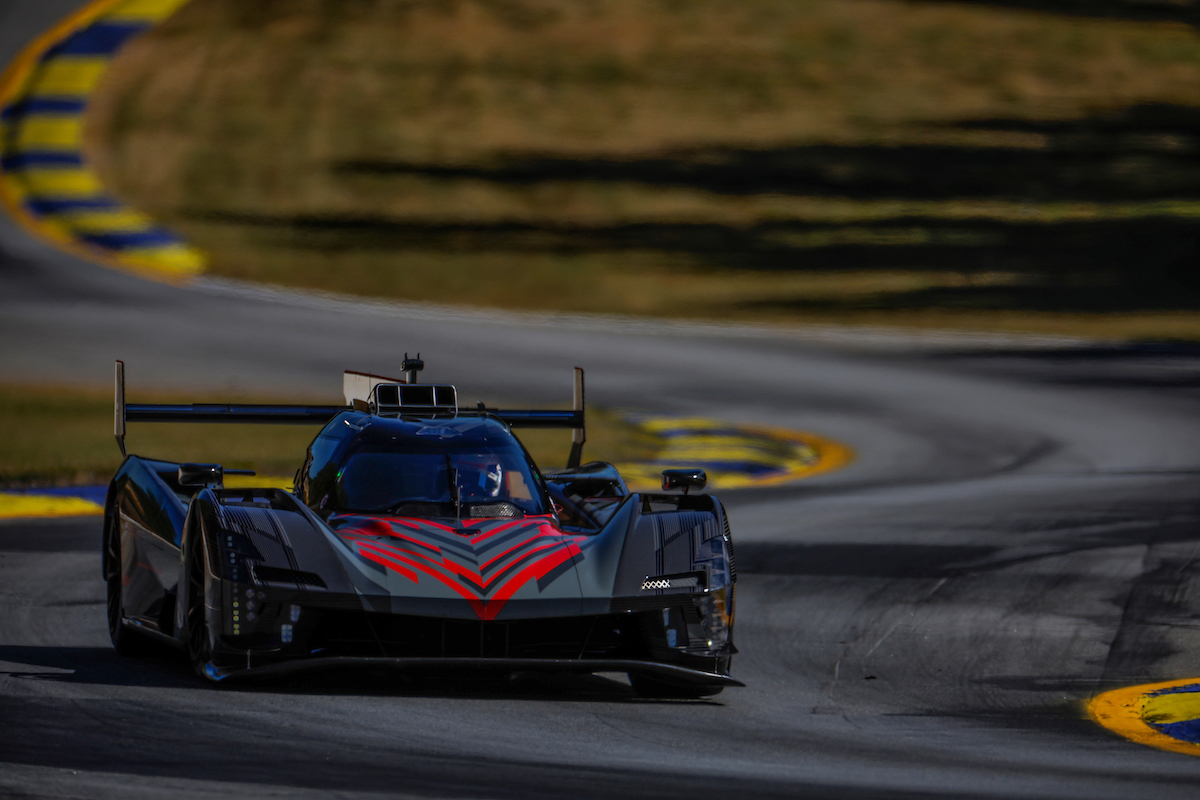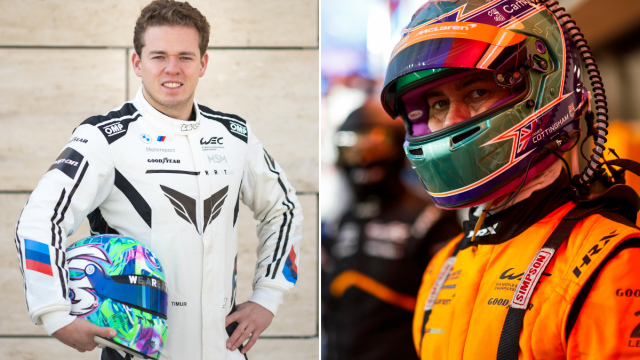Alexander Sims (Cadillac Racing) : « I was surprised how close it did feel to the DPi »
What are the differences in the car you noted at road atlanta from your initial test?
Just a general refinement from a systems point of view. With every test we try to bring new iterations of software. Braking maps I would say from a driver’s point of view. It’s going in the right direction; we’re making good progress on that. With the hybrid and the brake-by-wire system it allows you to alter the brake bias in different phases of driving that you can’t do in a conventional mechanical brake bias car. There’s a lot of work going on the in the background that is not immediately recognizable to the driver, but you start to think about how the downshifts are working and how the engine is pulling and all the different deployment strategies with the hybrid, and there’s a lot of work going on into every one of the settings that we try. From a pure performance point of view, it’s been good to get a lot of different scenarios checked out in terms of race stints and shorter runs. That’s been really helpful to me to get an good understanding of the car and to understand as a driver what I need to do to manage things as you do in every race. You need that seat time, getting those laps. This last test was great to get a lot of miles under our belt and really start to understand things better.
➡️ On the same topic :
What are you looking forward to in the next phase of testing?
Each track that we go to, for me it’s getting up to speed at that circuit. I’ve got experience at all theses tracks but nevertheless I’m lapping 10-15 seconds faster than the GT cars that I’ve driven before. There is some adjustment needed. Now that we’re getting past the fundamental things in the development of the car we’re looking to fine-tune, understand setups at different circuits, understand how we can push the performance envelope a bit more, ask a bit more from the car and get the balance tuned in through more of the corners. With all those steps hopefully extract more lap time and get closer and closer to what we can hopefully have at Daytona.

How much will you be able to fine-tune braking maps?
It’s something that we haven’t worked out the answer to because it’s not as simple as coming up with your theoretical braking bias on each corner and then running it because different drivers like different sensations from the car. Some like to feel the rear axle locking up a bit more, some the front. At the start of the stint with 100-plus kilos of fuel it’s going to need different brake bias toward the end. Trying to achieve a good baseline that works in most conditions is our first priority and then work out how much we want to try to optimize for different states because that brings complications as well. It's all doable, but with my experience with Formula E where you’re the only driver in the car, looking at one-lap qualifying, it’s a small state that you’re working in so it’s straightforward to optimize things for that one-lap format. Endurance racing is a whole different kettle of fish entirely.
What did you have to do to take the step up to prototypes?
Neck strength is a big one. The cars that I’ve driven for the last five or six years haven’t required too much neck training. I keep myself in good physical condition, but specifically the neck is the big difference. The speed the corners come up to you at, the length of time you actually have on each straight feels daunting to start with. The corners come up fast and you’re not processing things in your brain quickly enough. But Road Atlanta was actually the first time I felt calm. I was changing settings multiple times per lap and didn’t feel under pressure. I was changing settings to see how they affected performance in different corners and it was starting to come a bit easier. It was nice to feel a bit more on top of things. They’re really quick cars. It will not be that straightforward, especially when you bring traffic into the mix.
Are these cars more physically demanding to drive than the DPi ?
I don’t have a huge amount of experience with the DPi to compare. I was surprised how close it did feel to the DPi. We are aware of the physics of the car being a bit heavier, but I was surprised. Turn 1 at Atlanta is a good example. It’s a fast approach with short braking, you have to commit a lot of speed to it, but it held really well. The high-speed performance seems to be pretty good if you were to compare it with DPi. I don’t have enough experience to know about top speeds and accelerations. From what the others are saying, the car feels more powerful than the DPi. I don’t feel a huge difference in my driving compared to what I’ve done in GT, GTLM.





Comments
Log in to comment the article